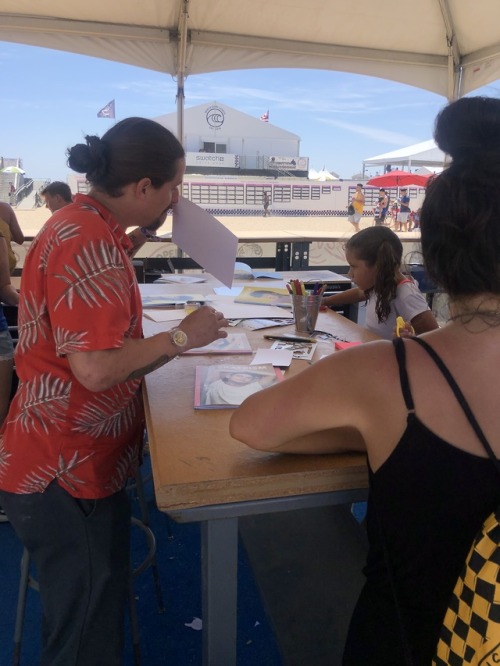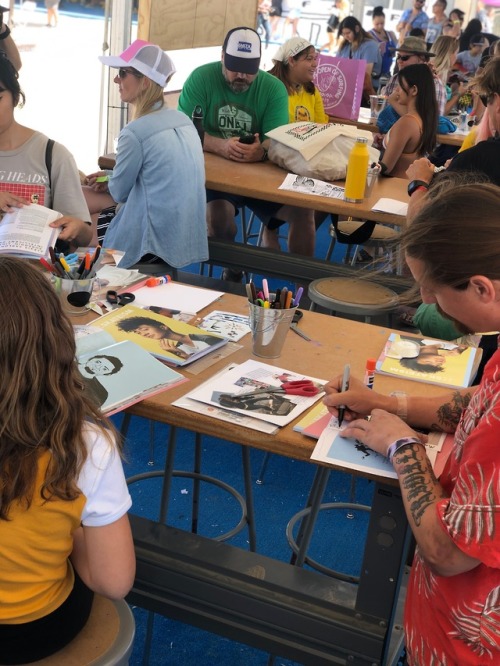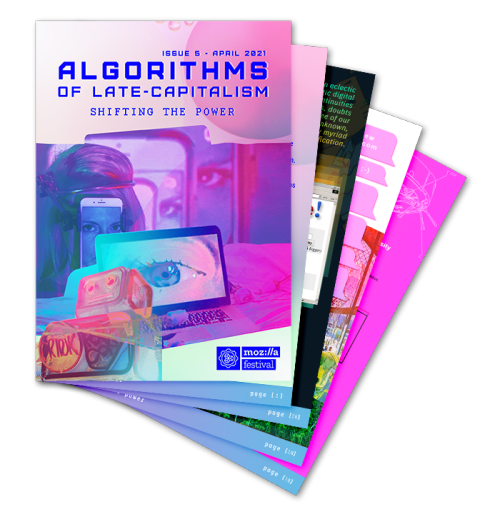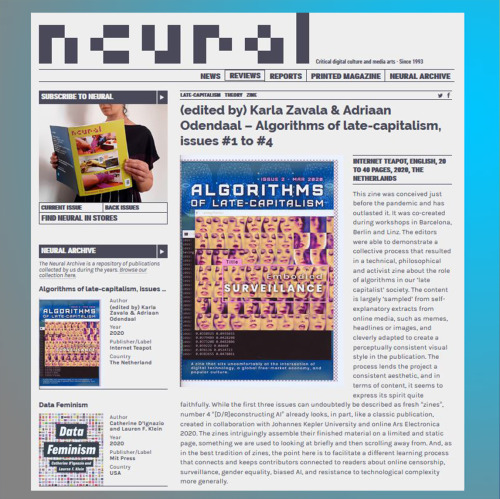#zine making
For one of my final projects, the medium that we choose is our own prerogative. I would like to make a zine for my final project, with this being said. The last time I made a zine (loved how it turned out), I used Word because it was the most accessible software to me - but this time, I would like to really step up my game. With that being said, what programs do y’all recommend that are (super cheap/free) that would allow me to accomplish this? I am sure Adobe would work really well for this; however, from my understanding Adobe is incredibly costly - and not really something I would want/need to invest in.
Conversely, I could also do an online zine. But not sure which platform would work best.




The Jellicle Oracle is here.
In April 2021, I decided I wanted to make a zine of my spiritual response to Cats: the Musical.
When I was a child, Cats: the Musical had a special place in my heart because I interpreted it as a catalogue of semi-divine folk heroes or ancestral, inherited archetypes *for cats*. Of course it’s nonsensical and overwrought to human audiences. It’s *for cats*.
On the 6th of April, I streamed a live painted interpretation of the different Cats to the backing of “off-brand” Cats: the Musical songs. The lyrics remained unaltered, but the “music” was improvised atonal splunging on various instruments by my significantly unmusical, untrained partners. I worked on each Cat for the duration of their corresponding Hymn, with the intention of illustrating their individual energy as true to my “third eye”’s raw capture as possible. The result is 13 Cats, horribly illustrated, in pure ink wash with no construction, ready for YOU to use as a divinatory oracle. Instructions are enclosed.
My intention with this zine is to encourage you to approach oracles and divination in more playful, humourous ways. Creating emotional and magical connections through humour and play is very important, I think, in keeping magic accessible and fresh.
Contains a download code for a terrible surprise. Horrid accompanying sticker of Jemima, the adorable little white cat that does ballet that everyone’s gay for (pictured) is here.
SHOP/KO-FI/PATREON/INSTAGRAM
WORKSHOP SHOUT OUT |SKATEISM|VANS US OPEN
It’s the last weekend of the Vans US Open of Surfing, but we’re not ready to go just yet!
We’ve still got some of our favorite workshops over the week to share –like the fun folks over at SKATEISM who hosted a zine making workshop at Van Doren Village. We caught up with Tobias from SKATEISM to find out what folks created, more about the zine making process, and what special gift they’re giving out on this final weekend.
Introduce yourselves and tell us a little bit about Skateism.
My name is Tobias Coughlin-Bogue, and I’m the online editor for SKATEISM. The magazine was founded by Christos “Moch” Simos and Oisin “Osh” Tammas in Athens. It began as just a little local Athens skate blog in 2012, but when Osh signed on they started doing more English-language posts and international coverage. Moch is one of the only out skaters in Greece, and at some point he and Osh realized that the stories they were most interested in telling centered around that… as well as some other areas of skateboarding they felt had been neglected like skate charity, global scenes, and women’s skateboarding. They also realized they wanted to make a magazine, as a place for underrepresented populations in skateboarding to see themselves in a proper print publication. Two years and four issues later, that’s exactly what they’ve done and we’re very proud to present Issue #4 as the Pride issue, focusing on the experiences of LGBTQ+ skaters.
Take us through your workshop and what were you doing with attendees at the Vans US Open?
Essentially we facilitated everything to make a zine except shooting photos or binding the final copies. We had prints of images on hand for people to cut and glue onto cardstock, creating what’s called a “master” page. Masters are what zinemakers make photocopies of that they then bind together into their final zine. We started the workshop by talking a little bit about what zines are and why we think they’re so cool. We covered the zinemaking process, and then dived right into it.
What about zinemaking do you think is super fun and accessible?
Zinemaking was a fundamental part of the pre-internet skate culture. While it isn’t exactly a necessity anymore, when it comes to communicating our own unique visions of skateboarding it’s still super fun to do. It forces you to take all the things that catch your eye at an event like the US Open, that might be a quick Insta story or something, and put them all down on a page together in a thoughtful way. Plus we like writing about skating, and zines incorporate a lot more text than some of the forms of storytelling we do on social media these days.
As far as being accessible, well zines were kind of the social media in skateboarding (and punk and queer scenes too) before social media existed. They were cheap to make and there was a broad network of people sharing and exchanging them around the country, all interested in the same kind of subcultural topics. If you had an idea you wanted to share, you could just paste the images and words that capture it best to some backing paper and get to photocopying. Then mail it out to a distro or drop it off at the skate shop and — boom — you’re a publisher.
Obviously a lot more work goes into what we do with something like SKATEISM, which takes hours and hours of reporting and editing and designing to make, but I at least got into the world of skate media via zines, and I have a huge soft spot for them. For what I do, and what a lot of people getting into media these days do, learning to publish fast and loose is actually really helpful, because that’s the pace digital media operates at.
What type of materials did you have on-hand for folks to work with?
We shot a few photos of the first weekend of the event on Kodak Fun Savers (a very accessible and enjoyable way to source art for your zine!), and made photocopies of the best exposures. Plus, we had copies of some pages from past issues of SKATEISM… And of course all the scissors, glue, card stock, staplers, and other stuff folks needed to put together their own master pages. We encouraged attendees to supplement the images we’ve provided with writing and drawing that documents their own experience at the event!
Are there any rules to zinemaking?
Have a good time doing it and don’t be hateful. That’s about it.
Any tips you’ve learned over the years for readers who may want to try creating a zine on their own?
Just start doing it. To borrow a concept from Ira Glass, you know what you like to see on the page, so keep trying until the stuff you make starts to look like that. Don’t stress out too much if it doesn’t work out at first. Technically speaking, it’s really important to think in terms of spreads (two individual pages facing each other is one spread), and understand that a magazine is essentially a bunch of sheets of paper stacked up, stapled, and folded in half. Making sure that the individual pages in the spreads line up correctly can be tricky, so it might help to take a bunch of blank sheets of paper, bind them, write page numbers on them, then remove the staples and use them as a template for what to paste on each master page as you’re working.
What other zine techniques can people incorporate besides cutting and pasting?
Doing it by hand is obviously the classic method, and will get you the most zine scene cred. But I am not ashamed to admit that, after two issues of cutting and pasting my first zine, I started scanning my photos and putting it all in InDesign. There is no shame in using layout software, and it will give you a whole new appreciation for how much thought and effort goes into every single print publication you ever read. It’s not just what they’re writing and which photos they’re publishing, but where on the page that stuff is, where it is in relation to the other stuff, what color and font things are, what angles they’re tilted at, what the background is, and so on… It’s definitely a different look and feel than handmade, but now that design software is so accessible, we think it’s every bit as DIY.
What did participants create and walk away with after the workshop?
Well, besides hands on experience making zine master pages, we’re going to take our favorite masters and make a limited run of a compilation zine to give out on the final weekend of the event.
So we’d like anyone who enjoyed the workshop to come back and grab a copy of that! And failing that, just a better understand of the zinemaking, DIY ethos that skateboarding was built on. Skateboarders have always made their own spots, their own rules, and their own fun. That definitely applies to their media too.
Who are some of your favorite zine makers?
In the areas we’re focused on, you can’t not mention Xem Skaters by the Swedish nonbinary skater Marie Dabbadie. They’ve been making a rad, unapologetically genderqueer zine for years, and have done loads to change the conversation around gender in skateboarding. Of course, The Skate Witches are killing it too. In terms of general zines that I like, I grew up volunteering at the Zine Archive and Publishing Project in Seattle, which had copies of really rare ‘90s skate zines like Pool Dust, so I tripped out on those a lot growing up. Not ‘cause I’ve ever actually skated a real pool, just because they had this really scrappy, no bullshit aesthetic and made skateboarding look so cool.
Recently, I was on a team for Thrasher’s “Zine Thing” Challenge in Seattle, which gave people two weeks to shoot a zine with Fun Savers; two weeks to do writing, editing, and layout; and then gave awards in different categories. Looking through the compilation book of all the entries still blows my mind. It’s a great reminder that skateboarding is full of cool, creative people, and everyone has a wildly different experience of it. I still can’t pick a favorite, although Leo Bañuelos’ ’Skaters in Drag’ article is pretty legendary.
Three words that describe what Skateism is all about?
The underground and overlooked. Sorry that’s four!
Who or what were you most excited to check out at the Vans US Open?
Personally, I’m excited to finally skate Cherry Park (nearby). But that’s just because my joints are falling apart and I can only skate low ledges. At the Open, I was excited to see all the pros skate the course, especially the women. Women’s skateboarding has been growing at an insane pace in the last few years, and the level of talent is out of control. When I started skating, I never thought I would see little girls back-smithing huge hubbas and female pros filming back-tail-kickflip-outs for their video parts, but here we are. The rate of progression is so exciting to me, and I feel like people will definitely be throwing down for the event.
FOLLOW SKATEISM | WEBSITE|INSTAGRAM
Post link


speak now x red


New zine just dropped! This zine is particularly exciting because it features work exclusively from Black queer and trans folks!
Check out mentalrealnessmag.com/shop for more info!
Presenting the fifth issue of the Algorithms of Late-Capitalism zine: “Shifting the Power”
Digital Edition
Self-printing Edition
——————————————
In this era of increased reliance on algorithmic systems that we can’t
see and don’t control, how do we shift the power back to the citizen?
By knowing where, how, and to which effects algorithmic systems influence our lives – we can start finding ways to reconfigure our relationships with the systems pervading our digitizing public sphere. By interrogating and critically examining the underpinnings of these systems, from our unique perspectives, we can shift the power from the pervading technocracies back to the citizens.
——————————————
This zine was created by internet teapot (Karla Zavala and Adriaan Odendaal) and participants of the workshop: “Algorithms of Late-Capitalism: Zine Co-creation Workshop” that took place at the Mozilla Festival on 17 March 2021
* You can sign up for our upcoming board game co-design workshop here *
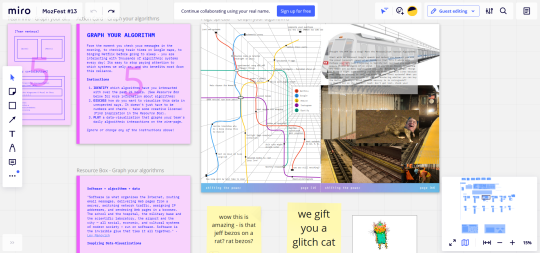
Post link
The designs of algorithmic systems are normative rather than neutral and can consequently reproduce and reinforce structural discrimination in our society. Can we imagine radical design alternatives to create a more just and equitable digitally mediated world?
Presenting a special issue of the Algorithms of Late-Capitalism zine: “[D/R]econstructing AI - Dreams of Visionary Fiction”
Digital Edition
Self-printing Edition
——————————————
This special edition of Algorithms of Late-Capitalism was produced by Nushin YazdaniandInternet Teapot with participants in the [d/r]econstructing AI – dreams of visionary fiction and zine-making held at Ars Electronica 2020.
——————————————

Post link
Presenting the seventh issue of the Algorithms of Late-Capitalism zine: “Bots, Ghosts and Other Workers”
Digital Edition
Self-printing Edition
——————————————
AI systems are made of human labour and have an impact on human labour conditions. This feedback cycle is present in almost all sectors to some degree. Yet, these systems are often designed and deployed in ways that keep this reality strategically concealed. For this issue, we invited workshop participants to unpack some of the social and technological dimensions of AI and highlight the hidden human costs of automation. Who pays the price for increased automation? What changes are taking place in power relations at work? Can we imagine ways to make labour more fair in the age of AI?
——————————————
This edition of Algorithms of Late-Capitalism was created by internet teapot (Karla Zavala and Adriaan Odendaal) and the participants of the workshop: Algorithms of Late-Capitalism Zine Co-creation Workshop that took place during the Mozilla Festival in March 2022.

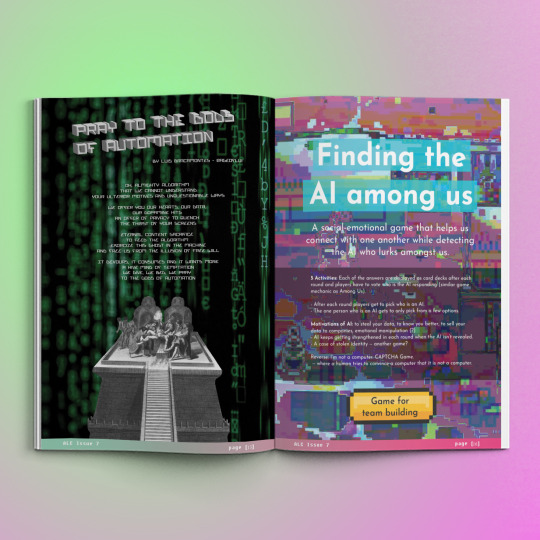
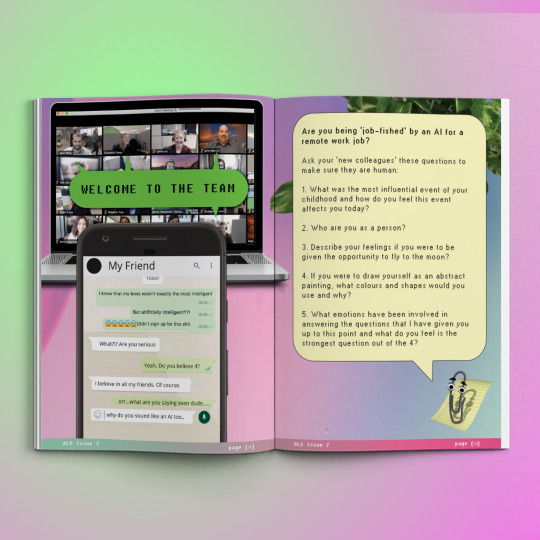
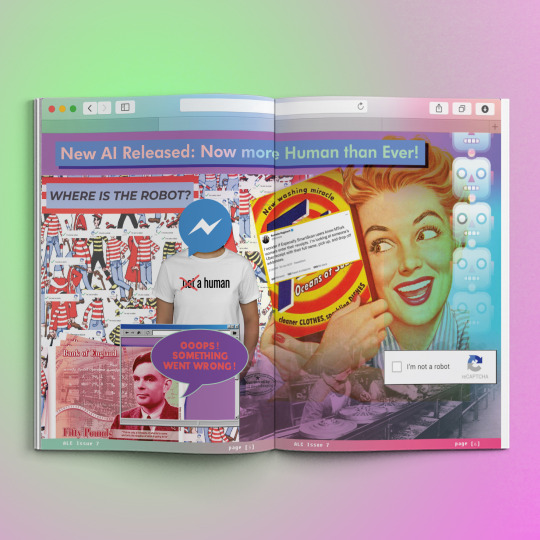
Post link
Presenting the sixth issue of the Algorithms of Late-Capitalism zine: “AI Myths”
Digital Edition
Self-printing Edition
——————————————
Humanoid robots moving through the world with self-determination - set on destroying humanity. Sentient operating systems with infinite knowledge falling in love with one another. Silicon Valley vaporware promising to solve all the world’s problems - from cavities to global poverty.
When we think of Artificial Intelligence or AI, we usually conjure up fantastical images from science-fiction or the tech industry hype machine.
Yet, relying on these unstable myths can distract us from the important (and often problematic) realities of AI technologies. It is crucial to try and see what is hidden behind these myths. By demystifying AI, we can begin to understand the impact these technologies have on our societies, communities, cultures, and daily lives.
——————————————
This edition of Algorithms of Late-Capitalism was created by internet teapot (Karla Zavala and Adriaan Odendaal) with special contribution from Buse Çetin and the participants of the workshop: Algorithms of Late-Capitalism Zine Co-creation Workshop that took place during the When Machines Dream the Future AI Festival organized by Goethe Institute on 13 November 2021.
Post link
Amazing to have a review of the Algorithms of Late-Capitalism Zine(s) in Neural Magazine
Read the review
Post link
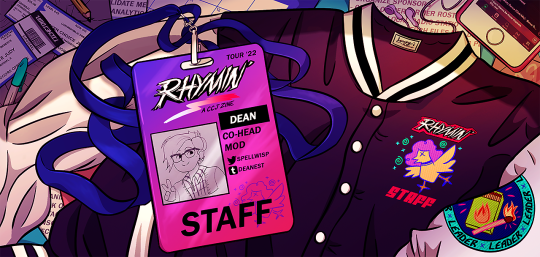
Meet Mod Dean, our Co-Head Mod!
Hey, I’m Dean (they/he) and based in the US! This is my second zine that I’ve been involved in. Currently, I am finishing up the Carmen Sandiego 2019 zine where I am co-head and social media mod. I adore Infinity Train (+ all the characters, altho the s3/s4 protags hold a special place in my heart). I can’t wait to get started on this amazing zine!
@deanest|twitter.com/spellwisp
Contributor Applications for Rhymin’: an Infinity Train (Book 4) charity fan zine open on April 15th, 2022! Follow us for updates✨
lil #tb here, I’m currently watching the last pre-season game w the Warriors and Trailblazers and feeling all the feels for the boys who do not grace those plushy foldy chairs :’’(



